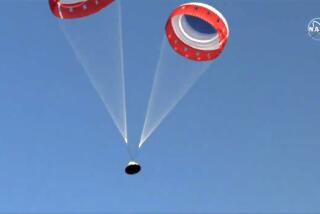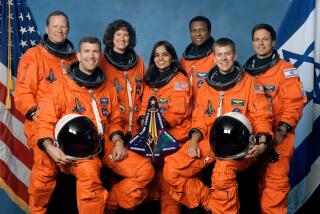Space Shuttle Post-Mortems
Whenever a disaster occurs, there are inevitably some people who try to use it to settle old scores, imagined or real rivalries, or other personal problems. I am afraid that in a Times article (March 2), “NASA’s Flaws Go Beyond Launches,” your reporters have allowed themselves to be manipulated to these ends. That is unfortunate, since it trivializes and seeks to make personal and petty both the National Aeronautics and Space Administration’s great enterprise and the issues raised by the tragic loss of the Challenger and its heroic crew.
I have been professionally involved in space systems and related technologies for more than two decades, and while I was not involved in the development of the shuttle system, I share your reporters’ larger concerns for the future of NASA. In the months since I came to NASA and assumed the responsibilities of, first, deputy administrator, and then of acting administrator, I have been impressed by the sense of responsibility evident in the vast majority of the staff. The historical tradition for care and thoroughness in engineering and science is still very much alive at NASA.
At the same time, the Challenger disaster plainly calls for a reexamination of NASA procedures, and the processes by which they are carried out. I have found that the majority of people in NASA whom I have encountered fully support such a careful rethinking and strongly support the presidential commission. The results of a careful, independent, and evenhanded investigation may well affect the future of the space program, and could have a direct bearing on the future safety of the astronauts.
All Americans have every reason to want to understand the facts and the issues of the accident. However, much of the Challenger accident discussion in the media so far has been regrettably shallow.
Pressures to launch are mentioned as if the motivation to get Challenger into orbit on schedule came always from external and irrelevant sources. In fact, NASA has always been concerned with safety and, in addition, with being able to carry out its missions, which indeed involve the general issue of timing.
This is true of purely scientific missions, of missions with commercial importance, and of those with national security objectives. NASA as an organization wants to perform these missions safely and successfully.
Time constraints for doing the job cannot be avoided, but they must be carefully managed, for general timeliness is part of the job. It bears upon the quality and even the possibility of the work that can be done. While the need is always there to get the job done, it must nevertheless be done in the context of safety for the mission, and safety for the crew.
The Challenger accident has focused attention on the fact that we now have only one principal gateway to space, the shuttle system. That constraint in itself is an important factor under which NASA has had to make its decisions. NASA is carefully examining a range of national capabilities to complement a replacement orbiter and leave us with alternatives for reaching space should any one system experience problems.
It is important for the presidential commission and NASA to review NASA’s launch procedures and its communications processes. It is also important that we examine objectively decisions on the program going back many years.
It is these program decisions, made by several Administrations and Congresses, that form the context in which launch decisions are made. A thorough review can help assure that NASA and the country can get on with its vital space program safely and effectively.
We must not be diverted from the great issues of space flight, of man’s future in space, the safety and reliability of space flight operations, and the way in which the United States will continue to be a great space-faring nation. These issues must be addressed with the utmost care and seriousness by all involved: the presidential commission, NASA, the government, the press, and the public.
WILLIAM R. GRAHAM
Washington
Graham is acting administrator of the National Aeronautics and Space Administration.
More to Read
Sign up for Essential California
The most important California stories and recommendations in your inbox every morning.
You may occasionally receive promotional content from the Los Angeles Times.










